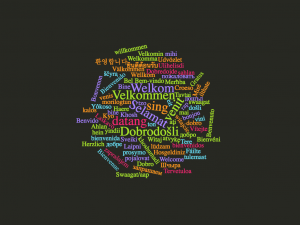Text to speech services analysis
Browsing Facebook, Roger Kibbe (voicecraft.ai), shout out to Roger, asked for voices text to speech services that have more personality. Just in yesterday’s episode about internationalization, we talked about the customization of voices in different languages and accents with Text to Speech services. But when it’s time to put real emotions it might a little harder to find the voices we want for our apps. Synthetic voices or text to speech services might come in two fundamental ways of consumption: one is download model and the other is streaming. Pricing schemes might be per minutes, per requests in the case of streaming, a combination of both or flat pricing. So here is a compilation of voice services, their offerings and prices:
Text to speech services comparison
Cepstral: It’s a little pricey, so it’s probably for established companies. Their demo has tons of voices that you can customize by pitch and rate and add effects like Space Robot or Split personality.
Acapela is a Belgium text to speech company. Acapela voices demo, the Acapela Box has a collection of voices described as happy, bad guy, old man or child, among others. Acapela offer a service of voice banking, preserving your own voice as synthetic speech. Other offerings include the creation of voices, a service for companies to differentiate through vocal dimension into their marketing strategy with an identifiable corporate sound. Pricing its based on a credit model where credits correspond to the length of the text – roughly the number of characters – for premium voices. Prices start from 6 Euros for 47 seconds of audio to 600 for 96 minutes of audio.
Voicery the thing I didn’t love about this service is they only have a versions of English voices, given the current state for voice apps, i really prefer a service where i can choose from a range of voices with different languages. On the other hand, voices did sounded quite real. As Acapela, Voicery provides the creation of voices and rights for companies to create their own voice. This is a streaming service and doesn’t offer support for on-device synthesis. They have two pricing packages: the enterprise, where prices are provided on request and the starter package up to 100 request per second at 0.001per character.
SpeechMorphing I heard about SpeechMorphing at Voice Summit and it seems to have a high quality service. They don’t have demo voices, you need to request a demo, so I’ll get back to this one in later episodes. It does shows that you can customize the style of the voices, promising.
Cereproc offers a streaming service, an SDK for developers. Really well crafted voices, the one with more voices demoing, pretty realistic at a reasonable price of 1.000.000 characters for 124 a month up to almost 500 per month. As other services Cereproc offers voice creation and voice cloning as well. Voices available in English, Dutch, French, Italian, Spanish, Portuguese, Japanese and other languages.
Talestreamer: High quality and best relation quality-price with plans of 4/month for 25 000 requests and 16/month for 1,000,000 requests. Talestreamer is the service behind The Magic Door, in my opinion one of the best voice applications out there.
Lastly, Amazon Polly, Amazon synthesize speech service. You can try it for free customizing it with SSML. It’s a great service for your voice apps or custom audios, but if you need something with more personality, or create your own voice for a brand identity, then you better stick with one of the others.
Winners are Talestreamer it has really good voice at a reasonable price. And Cereproc with voices in a lot of languages providing an SDK plus streaming service at a reasonable price but also you can create more custom voices if needed. As always when choosing a service, it will depend on your needs.
Do you have a text to speech service to recommend? Have you tried any of these? Shut us a message @voicefirstlabs on twitter. In the episode notes at voicefirstweekly.com/flashbriefing/63 you can find the full transcript of the episode plus the links to each service mentioned.
Before wrapping up, I want to invite you to subscribe to our weekly newsletter. This morning we send our issue number 15! Time flies. Thank you for listening, you have a great day and we will talk tomorrow!

